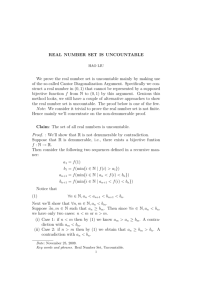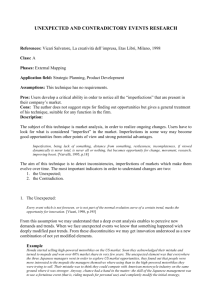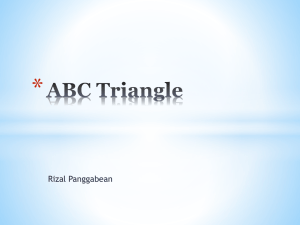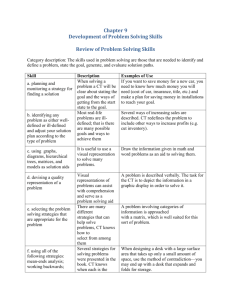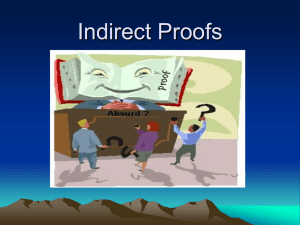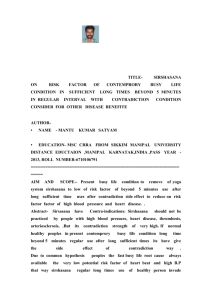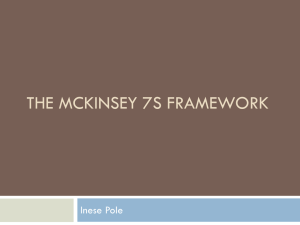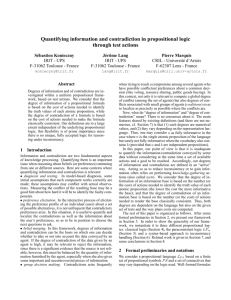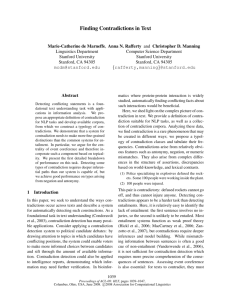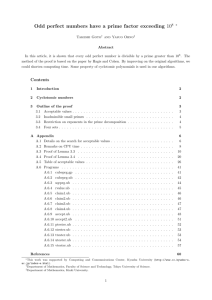If a collection of points that determines only integer distances is
advertisement
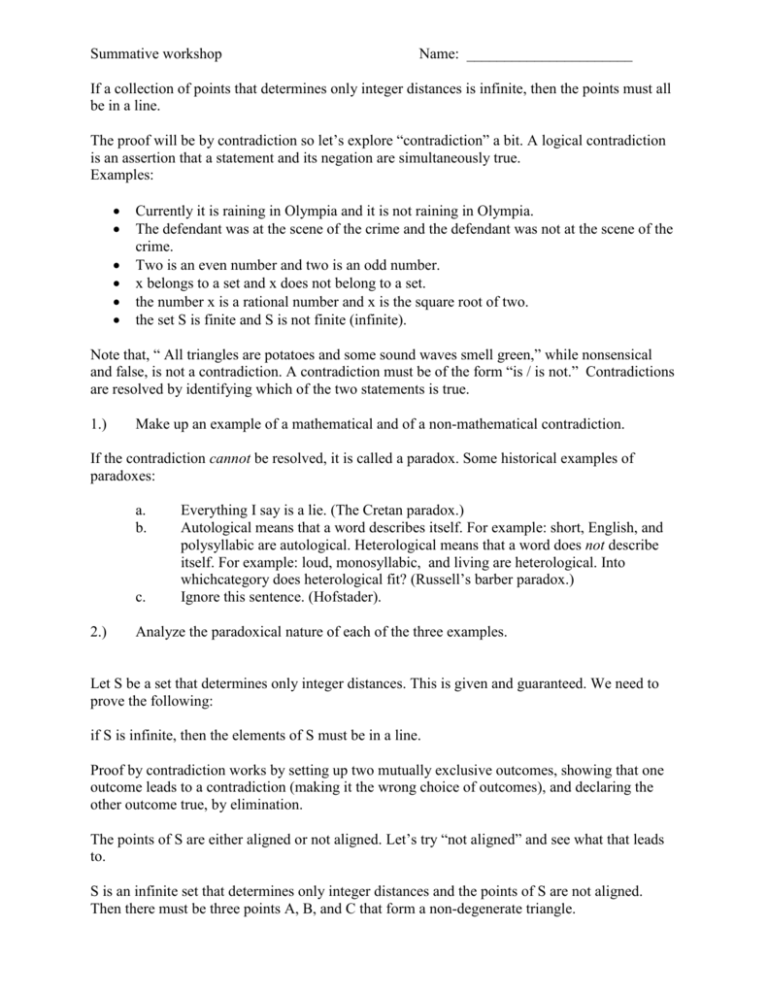
Summative workshop Name: ______________________ If a collection of points that determines only integer distances is infinite, then the points must all be in a line. The proof will be by contradiction so let’s explore “contradiction” a bit. A logical contradiction is an assertion that a statement and its negation are simultaneously true. Examples: Currently it is raining in Olympia and it is not raining in Olympia. The defendant was at the scene of the crime and the defendant was not at the scene of the crime. Two is an even number and two is an odd number. x belongs to a set and x does not belong to a set. the number x is a rational number and x is the square root of two. the set S is finite and S is not finite (infinite). Note that, “ All triangles are potatoes and some sound waves smell green,” while nonsensical and false, is not a contradiction. A contradiction must be of the form “is / is not.” Contradictions are resolved by identifying which of the two statements is true. 1.) Make up an example of a mathematical and of a non-mathematical contradiction. If the contradiction cannot be resolved, it is called a paradox. Some historical examples of paradoxes: a. b. c. 2.) Everything I say is a lie. (The Cretan paradox.) Autological means that a word describes itself. For example: short, English, and polysyllabic are autological. Heterological means that a word does not describe itself. For example: loud, monosyllabic, and living are heterological. Into whichcategory does heterological fit? (Russell’s barber paradox.) Ignore this sentence. (Hofstader). Analyze the paradoxical nature of each of the three examples. Let S be a set that determines only integer distances. This is given and guaranteed. We need to prove the following: if S is infinite, then the elements of S must be in a line. Proof by contradiction works by setting up two mutually exclusive outcomes, showing that one outcome leads to a contradiction (making it the wrong choice of outcomes), and declaring the other outcome true, by elimination. The points of S are either aligned or not aligned. Let’s try “not aligned” and see what that leads to. S is an infinite set that determines only integer distances and the points of S are not aligned. Then there must be three points A, B, and C that form a non-degenerate triangle. 3.) Sketch. Any other point of the set cannot be a vertex of ABC and hence cannot be on two sides of the triangle. (Only vertices are simultaneously on two sides.) So if P is any other point in S, it fails to be on two sides of the triangle, say AB and AC. 4.) Explain from the hypotheses, why A, B, and C must exist and why the other point P is not just made up. What are the consequences of P not being on AB? Add point P to your sketch. Since P ≠ C, ABC ≠ PAB. What do we know about triangles? The triangle inequality! | PA – PB | < AB, which is by hypothesis some integer. Since all distances determined by S are integers, | PA – PB | = AB – 1, or | PA – PB | = AB – 2, or | PA – PB | = AB – 3, or … | PA – PB | = 2, or | PA – PB | = 1. Absolute value is related to distance. For example, | PA – PB | = 3 means: the distance from P to A minus the distance from P to B equals three. This means that P is on an hyperbola with major axis 3 and foci at A and B. Taken together, any point of S distinct from A, B, and C and not on AB must be on one of the AB – 1 hyperbolas described above. But , any point of S distinct from A, B, and C must also fail to be on another side of ABC (other than AB) – we have designated this other side AC. 5.) Repeat the above argument for P not on AC Since P is not on AB and not on AC, it must be on one of the hyperbolas | PA – PB | < AB and one of the hyperbolas you described in 5.), that is, it is on the intersection of two hyperbolas. Each condition generated finitely many hyperbolas; finitely many hyperbolas intersect at finitely many points; and any point P in S but distinct from A, B, and C must be one of the hyperbolic intersection points. Therefore, … Hence, the contradiction … Hence, “not aligned” is the wrong choice. And the conclusion is … 6.) Fill in the above blanks.

